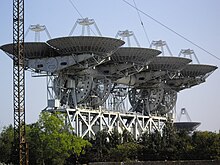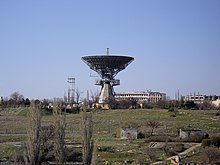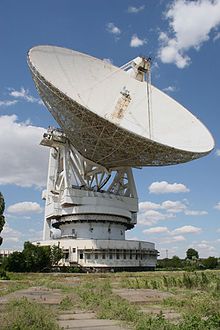
Venera 1, also known as Venera-1VA No.2 and occasionally in the West as Sputnik 8 was the first spacecraft to perform an interplanetary flight and the first to fly past Venus, as part of the Soviet Union's Venera programme. Launched in February 1961, it flew past Venus on 19 May of the same year; however, radio contact with the probe was lost before the flyby, resulting in it returning no data.

Mars 1, also known as 1962 Beta Nu 1, Mars 2MV-4 and Sputnik 23, was an automatic interplanetary station launched in the direction of Mars on November 1, 1962, the first of the Soviet Mars probe program, with the intent of flying by the planet at a distance of about 11,000 km (6,800 mi). It was designed to image the surface and send back data on cosmic radiation, micrometeoroid impacts and Mars' magnetic field, radiation environment, atmospheric structure, and possible organic compounds.

Venera 3 was a Venera program space probe that was built and launched by the Soviet Union to explore the surface of Venus. It was launched on 16 November 1965 at 04:19 UTC from Baikonur, Kazakhstan, USSR. The probe comprised an entry probe, designed to enter the Venus atmosphere and parachute to the surface, and a carrier/flyby spacecraft, which carried the entry probe to Venus and also served as a communications relay for the entry probe.

The NASA Deep Space Network (DSN) is a worldwide network of spacecraft communication ground segment facilities, located in the United States (California), Spain (Madrid), and Australia (Canberra), that supports NASA's interplanetary spacecraft missions. It also performs radio and radar astronomy observations for the exploration of the Solar System and the universe, and supports selected Earth-orbiting missions. DSN is part of the NASA Jet Propulsion Laboratory (JPL).

Venera 16 was a spacecraft sent to Venus by the Soviet Union. This uncrewed orbiter was to map the surface of Venus using high resolution imaging systems. The spacecraft was identical to Venera 15 and based on modifications to the earlier Venera space probes. The latest data from the spacecraft were received on June 13, 1985, when it responded to the signal sent from Earth for Vega 1.
Venera 15 was a spacecraft sent to Venus by the Soviet Union. This uncrewed orbiter was to map the surface of Venus using high resolution imaging systems. The spacecraft was identical to Venera 16 and based on modifications to the earlier Venera space probes.

The Goldstone Deep Space Communications Complex (GDSCC), commonly called the Goldstone Observatory, is a satellite ground station located in Fort Irwin in the U.S. state of California. Operated by NASA's Jet Propulsion Laboratory (JPL), its main purpose is to track and communicate with interplanetary space missions. It is named after Goldstone, California, a nearby gold-mining ghost town.
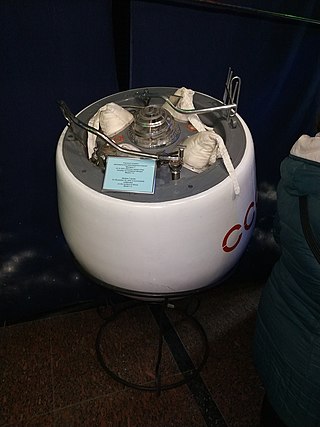
Venera 7 was a Soviet spacecraft, part of the Venera series of probes to Venus. When it landed on the Venusian surface on 15 December 1970, it became the first spacecraft to soft land on another planet and the first to transmit data from there back to Earth.

The Madrid Deep Space Communications Complex (MDSCC), in Spanish and officially Complejo de Comunicaciones de Espacio Profundo de Madrid, is a satellite ground station located in Robledo de Chavela, Spain, and operated by the Instituto Nacional de Técnica Aeroespacial (INTA). Part of the Deep Space Network (DSN) of NASA's Jet Propulsion Laboratory (JPL), along with its two sister stations at Goldstone, California and Canberra, Australia it is used for tracking and communicating with NASA's spacecraft, particularly interplanetary missions. The DSN and the Near Space Network (NSN) are services of the NASA Space Communications and Navigation program (SCaN).

The 3MV planetary probe is a designation for a common design used by early Soviet unmanned probes to Mars and Venus. It was an incremental improvement of earlier 2MV probes and was used for Zond 1, Zond 2 and Zond 3 missions to Mars as well as several Venera probes. It was standard practice of the Soviet space program to use standardized components as much as possible. All probes shared the same typical characteristics and differed usually in equipment necessary for specific missions. Each probe also incorporated improvements based on experience with earlier missions.
The Manned Space Flight Network was a set of tracking stations built to support the American Mercury, Gemini, Apollo, and Skylab space programs.

Indian Deep Space Network (IDSN) is a network of large antennas and communication facilities operated by the Indian Space Research Organisation to support the interplanetary spacecraft missions of India. Its hub is located at Byalalu, Ramanagara in the state of Karnataka in India. It was inaugurated on 17 October 2008 by the former ISRO chairman G. Madhavan Nair.
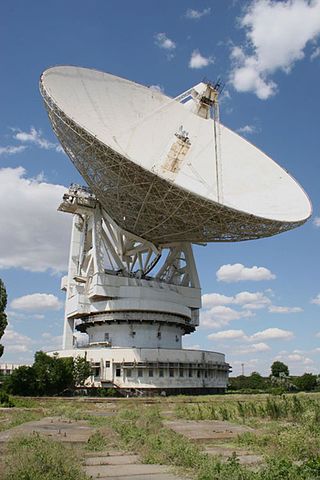
There are three radio telescopes designated RT-70, all in countries that were once part of the former Soviet Union, all with similar specifications: 70m dishes and an operating range of 5–300 GHz. They are a part of the former Soviet Deep Space Network, now operated by Russia. The Yevpatoria facility has also been used as a radar telescope in observations of space debris and asteroids.

The Yevpatoria RT-70 radio telescope is an RT-70 radio telescope and planetary radar at the Center for Deep Space Communications, Yevpatoria, Crimea. In scientific literature, it is often called the Evpatoria Planetary Radar (EPR).

The Galenki RT-70 radio telescope is an RT-70 telescope at the East Center for Deep Space Communications, Galenki (Ussuriysk), Russia.
The Suffa RT-70 radio telescope is an RT-70 radio telescope at the Suffa Radio Observatory on the Suffa plateau in Uzbekistan.
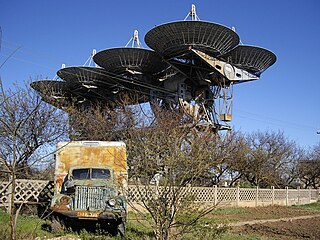
Pluton is a system of deep space communications and planetary radar in Crimea. It was built in the Deep-Space Communication Center area Eighty-Fifth Radiotechnical Center of Distance Communications with Space Objects; ; ; near Yevpatoria in 1960, and consists of at least three antennas. Three of them are of the ADU-1000 design, an assembly of eight reflector antennas, each with diameter of 16 metres. At the North Station, two receiving antennas were built, and a transmitter was constructed 8.5 kilometres away at the South Station.

The Chinese Deep Space Network (CDSN) is a network of large antennas and communication facilities that are used for radio astronomy, radar observations, and spacecraft missions of China. The CDSN is managed by the China Satellite Launch and Tracking Control Center General (CLTC) of the People's Liberation Army Strategic Support Force Space Systems Department.

The forerunner of the Deep Space Network was established in January 1958, when JPL, then under contract to the U.S. Army, deployed portable radio tracking stations in Nigeria, Singapore, and California to receive telemetry and plot the orbit of the Army-launched Explorer 1, the first successful U.S. satellite.
Kosmos 167, or 4V-1 No.311, was a 1967 Soviet spacecraft intended to explore Venus. A spacecraft launched as part of the Venera programme, Kosmos 167 was intended to land on Venus but never departed low Earth orbit due to a launch failure.
